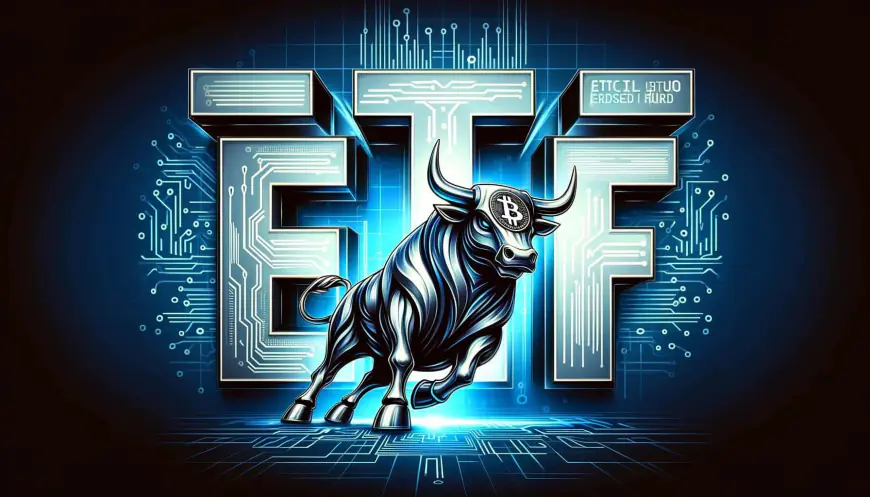Investors Pull $579 Million from Grayscale Bitcoin ETF to Take Profits – Does This Prevent BTC Price from Finally Rising and Showing a ‘God Candle’ to $80,000?
Bitcoin’s stagnation is linked to outflows from Grayscale’s Bitcoin ETF, creating selling pressure and preventing a significant price increase. Grayscale’s outflows are due to higher expenses and competition from cheaper Bitcoin investment products, impacting the overall market sentiment. Bitcoin (BTC) is experiencing a puzzling phase of stagnation, and key market activities suggest a direct correlation [...]


- Bitcoin’s stagnation is linked to outflows from Grayscale’s Bitcoin ETF, creating selling pressure and preventing a significant price increase.
- Grayscale’s outflows are due to higher expenses and competition from cheaper Bitcoin investment products, impacting the overall market sentiment.
Bitcoin (BTC) is experiencing a puzzling phase of stagnation, and key market activities suggest a direct correlation with the ongoing net outflows from Grayscale’s Bitcoin Exchange-Traded Fund (ETF) and its Bitcoin Trust. These outflows are creating substantial selling pressure on Bitcoin (BTC), potentially stalling its expected rise and the emergence of the so-called “god candle” in the BTC market.
In simple terms, a “god candle” is a “too-good-to-be-true” movement on the candlestick. This mainly happens with the altcoins, suddenly rallying to double, triple, or even more in a very short period of time such as in the table below. With the much anticipated ETF approval pundits expected “god candle” in the BTC market.

Outflow from Grayscale and Inflow into Competing ETFs
Since its conversion to an ETF, the GBTC has seen about $579 million withdrawn from its funds, a stark contrast to the performance of other Bitcoin spot ETFs, which collectively attracted nearly $1.4 billion. This divergence highlights a changing investor preference in the cryptocurrency ETF sector.
Several factors, including GBTC’s higher expense ratio than its rivals, are cited by analysts as the cause of this shift. For instance, the VanEck Bitcoin Trust charges a cost of merely 0.25%, but GBTC charges a 1.5% expense ratio. In addition, the market is experiencing a balancing act, with net stagnation occurring due to withdrawals from GBTC, which are nearly offsetting inflows into other Bitcoin investment products.
Grayscale’s Buying Pressure and Bitcoin’s Volatility
The dynamics in the Bitcoin market are different, even though Grayscale’s continuous outflows are exerting significant selling pressure. Although Grayscale’s efforts create strong purchasing pressure, Bitcoin volatility has decreased to extremely low levels. This unusual market behavior suggests that the price is not sharply declining or rapidly rising.
This stabilization shows that some investors are purchasing the Bitcoin Grayscale offers for sale. Investing in these Bitcoin assets offers protection against future market collapse. This delicate balancing act illustrates the tenacity of the Bitcoin market, as strong purchasing interest is offsetting selling pressure and maintaining a somewhat consistent, if stagnant, price movement.
I find it quite remarkable how the market keeps absorbing GBTC selling.
Someone is buying.
— Byzantine General (@ByzGeneral) January 17, 2024
Factors Limiting Bitcoin’s Price Surge and a “god candle”
There are a number of reasons why Bitcoin hasn’t seen a substantial price increase. The biggest contributing element is the intense selling pressure brought on by Grayscale’s net outflows. The quick withdrawal of money from Grayscale’s goods by investors has boosted the quantity of BTC available on the market, which in turn has driven down its price.
Moreover, the broader market sentiment towards cryptocurrencies remains cautious, influenced by regulatory uncertainties and market volatility. The competition among various Bitcoin investment products, such as newly introduced Bitcoin ETFs with lower fees, diverts investment away from traditional players like Grayscale. This redistribution of investments creates a fragmented market landscape, further complicating Bitcoin’s price trajectory.
Additionally, macroeconomic factors such as interest rate changes, inflation, and global economic uncertainties are playing a role in dampening investor enthusiasm towards riskier assets like Bitcoin, thus hindering its potential for a significant price rally.
Impact on Bitcoin’s Market Position
Following the SEC’s approval of GBTC’s ETF conversion, Bitcoin experienced a decline in value. From a high of around $48,000 at some point this January, it fell to approximately $43,000 in the subsequent days, marking a significant decrease.
At the time of this writing, Bitcoin was valued at $42,521.16, experiencing a 0.65% decrease. Additionally, the trading volume for BTC also declined by 17.76%, reaching $19.94 billion.
What's Your Reaction?









































































































